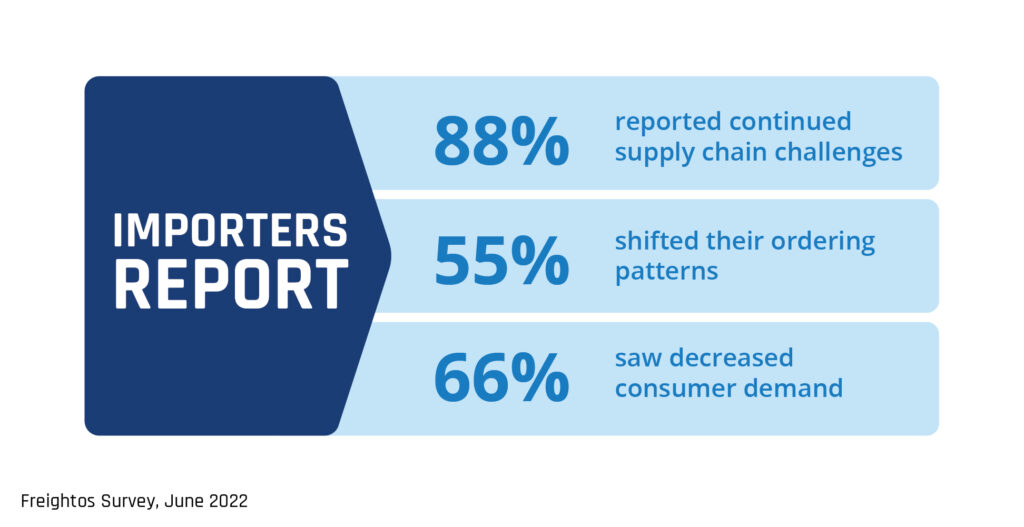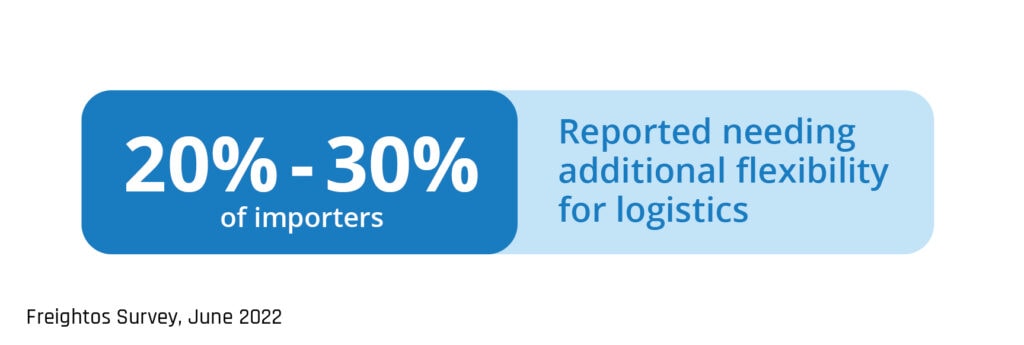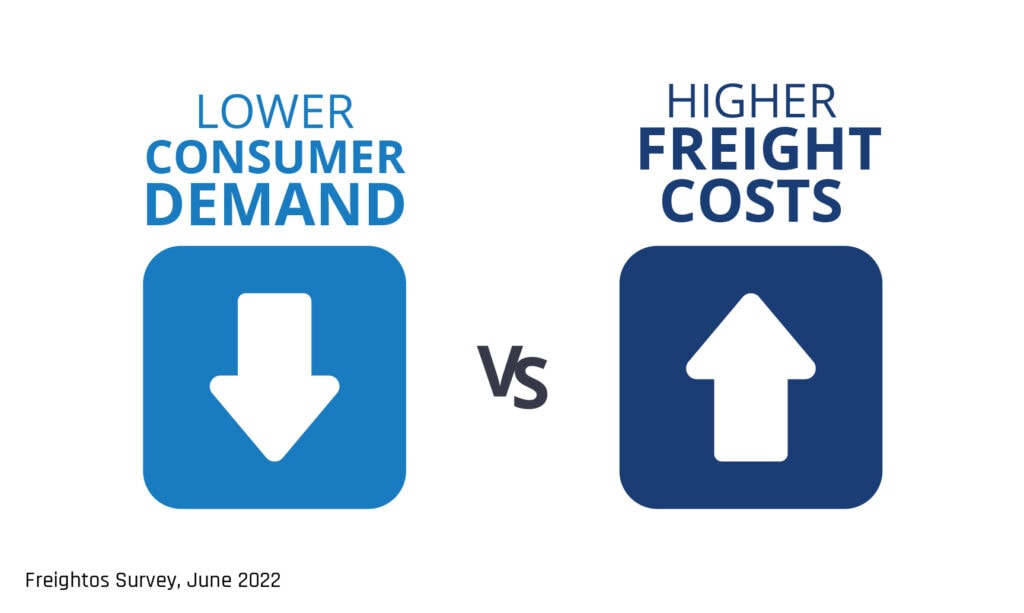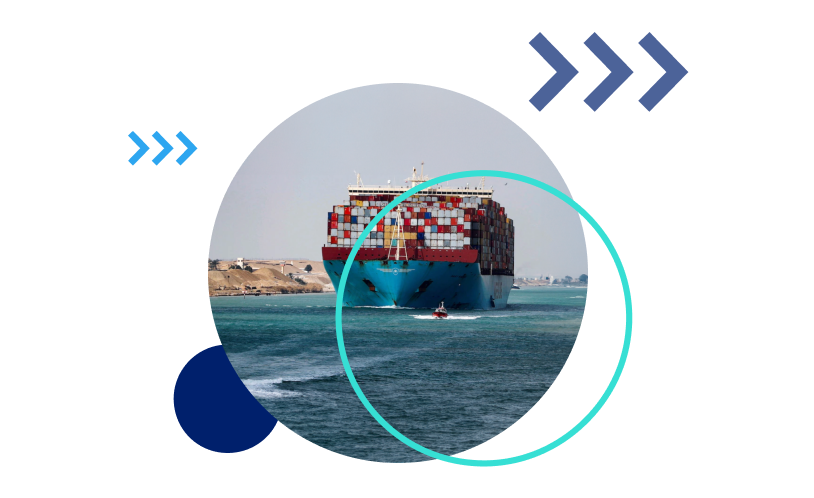At the beginning of 2022, shippers still faced shipping volatility, delays, and elevated costs.
To see what this looks like on the ground, we surveyed over 200 importers and exporters, mostly small to medium-sized businesses, and asked how their businesses have been affected since the start of this year.
The main takeaway?
Businesses are still coping with complex supply chain challenges, which means that staying flexible when planning a shipment is more important than ever.
Pandemic shipping delays and the impact of COVID on the Shipping Industry
It’s been nearly 18 months since congestion and delays became widespread, and though things are improving, they’re still tough.
A majority (88%) of businesses reported supply chain difficulties in the last six months.
The latest disruption was the lockdown in Shanghai, which hurt 68% of respondents.
75% of those shippers affected by the Shanghai lockdown reported trouble shipping goods that were ready for export, and nearly half had trouble sourcing orders as manufacturing slowed.
However, for some businesses, things have improved. Almost a third (31%) said the state of their logistics operations is better than six months ago.

What is the state of freight in the third year of the pandemic?
Ocean rates have fallen significantly in the last few months, but at more than $9,500 per container from China to the US, prices are still about 6.5 times higher than in June 2019.
Importers have accepted the additional expense as the cost of keeping shelves stocked and have also come to expect significant delays.
This means adjusting ordering patterns to meet customer demand.
Most respondents (55%) reported plans to place peak season orders early this year, with 74% citing lessons learned from delays during last year’s peak season.
SMB importers are also trying to mitigate the disruptions in other ways. 20-30% report using multiple logistics service providers, and another 20-30% said they have switched shipping mode – from ocean to air freight, or from FCL to LCL.

New challenges in 2023
The early months of the coronavirus led to a surge in consumer spending on goods. That resulted in soaring freight costs, leaving shippers struggling to adapt.
Many businesses began planning shipments far in advance to keep inventories stocked despite severe delays.
Now, two-thirds of small and medium businesses are seeing a decrease in consumer demand, due, at least in part, to a combination of inflation and a shift back to spending on services.
That means stocking inventory ahead of time, which could lead to excess supply as seen with Target’s recent inventory overshoot.
Unfortunately, like Target, many retailers may lose out due to surplus inventory.
Once again, businesses will need to seek other ways to minimize supply chain uncertainty.

A freight marketplace allows flexibility in shipping
With ongoing supply chain disruptions, flexibility can be a key factor in keeping goods moving, on time, and within budget.
Many businesses are already working with different shipping modes and services providers to be able to move quickly and adapt to challenges that arise.
Using a freight marketplace like Freightos.com empowers shippers to choose the lane, service, and mode that is right for each shipment – and switch easily when the need arises.
Learn more about the effects of coronavirus on shipping
For more updates on coronavirus and the shipping industry, check out our resources for Shipping Delays in 2023, Coronavirus Shipping Updates, and other Freight Market Updates.



